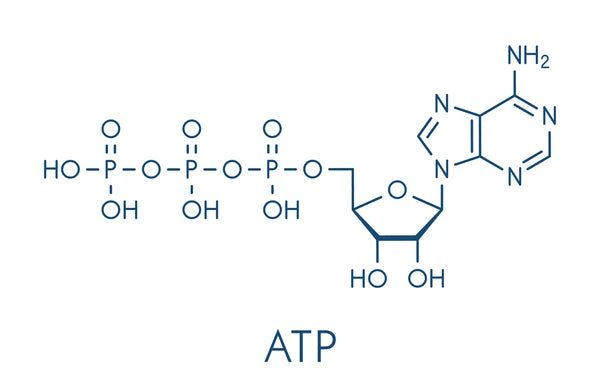Adenosine Triphosphate (ATP) serves as the energy currency of life. It is a molecule found in all living organisms and plays a crucial role in various biological processes. From powering cellular activities to enabling muscle contractions, ATP is indispensable for the functioning of the human body at every level.
What is ATP?
ATP is a nucleotide comprised of an adenine molecule, a ribose sugar, and three phosphate groups. Its structure is relatively simple, yet its significance is profound. The energy stored within the bonds between the phosphate groups is released when these bonds are broken, facilitating cellular work.
Cellular Energy Currency
The primary function of ATP is to store and transfer energy within cells. When cells require energy to perform tasks such as muscle contraction, active transport of molecules across membranes, or synthesis of macromolecules, ATP provides the necessary energy. This energy is released through the hydrolysis of ATP into adenosine diphosphate (ADP) and inorganic phosphate (Pi), a reaction catalyzed by enzymes known as ATPases.
ATP in Metabolism
ATP is involved in both catabolic and anabolic metabolic pathways. During catabolism, larger molecules are broken down into smaller ones, releasing energy that is used to regenerate ATP from ADP and Pi. This process occurs in cellular respiration, where glucose is oxidized to produce ATP through the electron transport chain.
Conversely, in anabolic reactions, smaller molecules are synthesized into larger ones, requiring energy typically provided by ATP hydrolysis. Examples include the synthesis of proteins from amino acids and the formation of DNA and RNA from nucleotides.
ATP and Muscle Contraction
Muscle contraction is a highly energy-demanding process that relies on ATP. When a muscle is stimulated to contract, ATP is rapidly consumed to power the interaction between actin and myosin filaments, enabling muscle fibers to shorten. Without an adequate supply of ATP, muscle function would cease, leading to paralysis.
ATP and Nerve Impulse Transmission
Nerve cells, or neurons, rely on ATP to transmit electrical impulses. ATP fuels the active transport of ions, such as sodium and potassium, across neuronal membranes, establishing and maintaining the electrochemical gradient necessary for nerve impulse propagation. Additionally, ATP is involved in the synthesis and release of neurotransmitters, which are crucial for intercellular communication within the nervous system.
Regulation of Cellular Processes
ATP also serves as a signaling molecule, regulating various cellular processes. High levels of ATP indicate an energy-rich environment, signaling the inhibition of energy-producing pathways to prevent wasteful expenditure. Conversely, low ATP levels signal the activation of pathways involved in ATP synthesis to replenish cellular energy stores.
Conclusion
In essence, ATP is the molecular fuel that powers life. Its role in energy transfer, metabolism, muscle contraction, nerve impulse transmission, and cellular signaling underscores its indispensability in the human body. Understanding the importance of ATP sheds light on the intricate workings of biological systems and underscores the significance of maintaining energy homeostasis for overall health and well-being.

